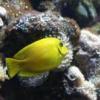-
Posts
1,054 -
Joined
-
Last visited
MisterTang's Achievements

Grandmaster Reefer (9/13)
-
I assumed it was just the vodka you were dosing - not the tank, but yourself
-
I've heard that garden eels are notoriously difficult to keep - but they sure look fun.
-
Paul, your mandarins are looking fat and happy. Do you feed them specifically, or leave them to just pick around in the tank?
-
The eighteen-fifties? But seriously, I do think you're right about some of this, and I think some of these theories are catching up to the industry. I notice that WAMAS sponsor LRS specifically supplement their frozen food with bacteria, and I keep hearing about major success stories in getting fish to breed and getting their offspring to survive using this sort of food.
-

MisterTang's IM 38 Nuvo Reboot
MisterTang replied to MisterTang's topic in Dedicated Tank (Build) Forum
Whew! What a month! The tank has just exploded with awesome stuff. The caulerpa I got from BRK has just been going nuts in the tank. I have to take out a handful every two weeks or it starts to grow a large chunk at the top and shade everything. I picked up a rock from a tank teardown of a friend of mine; my rockwork just seemed "bare" and like it was missing something. It's a pretty good-sized rock with a bunch of anthelia and yellow sponge in it, along with mini brittle stars which I had in my 72g bowfront but was missing from my last tank. I also have also seen a massive amount of copepod colony growth - it really is so much easier to "long cycle" a tank without fish and let critters like this get established before introducing predators. This is the first tank I've had with the harmless "wheel hydroids" (dots on the glass), which have been interesting. I've scraped a few out and have observed them under a microscope. They seem to resemble the infant jellyfish stage that Jon talked about at the last meeting. The tank has been cycling for six weeks now and things have definitely settled down, so I introduced my first livestock - a pair of aquacultured clowns that we picked up from BRK over the weekend. Johnny was patient and let my four-year-old pick exactly the pair she wanted. Next livestock acquisition will probably be an ORA yellow assessor - I'm hoping someone locally is an ORA retailer. I'd like to keep all-aquacultured fish in this setup if possible; not only do I think there's less chance for disease that way, but as a capitalist at heart, I want to send the message with my wallet that I value efforts to breed species for hobbyist use rather than catching them wild, even if it's more expensive; after all, in a hobby where you pay $10/lb for rock, why is there any hand-wringing at all over 10-15 additional dollars a fish to support sustainable aquaculture? -
If it's already dry and relatively clean, I'd just do a vinegar soak vs. bleach.
-
I couldn't even deal with aggressive cinnamon clowns, let alone that.
-
Rob is way more knowledgeable than I, but I would also avoid having rocks close to the glass because of how annoying it is to clean! I now place rock far enough away that my mag-float can pass unimpeded on any surface that will grow visible algae, and it makes a big difference in the "day to day" look of the tank.
-
Realized I hadn't posted any photos in a while of this! One of my jellies was acting a little off when I first got him, and a day or two later started "hula hooping" - where instead of one coordinated "pulse" where the jellyfish moves itself, it instead will sort of twitch one quarter of its body, then the next, then the next where it looks like it's, well, using a hula hoop. Unfortunately, this is indicative of nerve damage in the jelly, but fortunately, as Jon mentioned, jellies can pretty much regenerate anything, and the impacted jelly is already back to normal albeit noticeably smaller than the other two. Some of the "dots" you see in their tentacles are the baby brine shrimp I feed them. I have skipped the included powdered food almost entirely and feed exclusively baby brine shrimp. I think it ends up being better for the tank, as there's functionally no uneaten food; the jellies are surprisingly good at capturing all the brine shrimp within 20 minutes or so. My usual routine is to make baby brine shrimp over the weekend and one batch tends to last my jellies for the week. I am probably going to try adding some copepods from my main tank into their diet a couple times a week. Water quality is a big deal with jellies because they can't handle any ammonia and the water volume in these tanks is pretty small. Additionally, bio filtration is limited, so to be on the safe side I end up doing water changes several times a week - I just scoop a cup of water out of the front and dump a cup of saltwater in the back. A water change takes me less than a minute. I have a bunch of pre-mixed water sitting in a large container so the water I'm adding is the same SG. Also, as mentioned before, there's really no evaporation to speak of, so no ATO and no need for freshwater. I haven't had any algae growth and my ammonia is at complete zero and I experience minimal nitrate. I also added some Seachem Matrix in the back to add to the biological filtration.
-
Do jellyfish like clown fry, I wonder?
-

Drs Foster and Smith 25% off coupon - works for Reef Crystals
MisterTang replied to cpu933k's topic in General Discussion
Expired :( -
I struggle with this too, and am not sure where the balance is. On the one hand, the more I keep my tank "controlled", the less risk I have of bringing in unwanted algae or pests. On the other hand, on its face, a certain amount of biodiversity seems good, and I really like those little saltwater tube worms that pop up. The more I think about aquarium bio-diversity though, the more I suspect Rob is right - if you bring something in from the ocean, it's going to have a lot of diversity, but a lot of that will probably die off (read: spike my nitrates) in a closed system that doesn't have the food chains and environment of the ocean. As for paul b's aquarium, if he keeps it going a couple more decades, his fish will evolve legs and he'll have to turn it into a terrarium.
-

Anybody tried Ocean Water for a water change?
MisterTang replied to sen5241b's topic in General Discussion
This is definitely a Paul B question. He uses ocean water in his 40-year-old reef tank and swears by it. -
They're here! One of the benefits of the WAMAS deal was that JellyfishArt sends the jellies overnight free - it is two-day shipping normally. I'm glad they did this because I would have felt nervous with the jellies being in transit for two days during my first experience with them. The bag water was about 1.026, whereas my tank was about 1.022, so the jellies sunk even after acclimating them for an hour. I raised the tank salinity to 1.023 and that made them perk up a bit. If I had to do it again, I'd mix the water a bit saltier and have some on standby to get it closer to what the bag water ended up being. The company recommends 1.020-1.023, so I'm going to bring the salinity down gradually over the next month. After about 2 hours, the jellies were no longer at the bottom and were floating around. I had some baby brine shrimp going in the hatchery and they immediately perked up for that.








